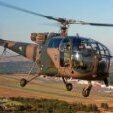-
Posts
459 -
Joined
-
Last visited
-
Days Won
17

F10 replied to onetrack's topic in Aircraft Incidents and Accidents

F10 replied to onetrack's topic in Aircraft Incidents and Accidents

F10 replied to Garfly's topic in AUS/NZ General Discussion

F10 replied to onetrack's topic in Aircraft Incidents and Accidents

F10 replied to Garfly's topic in Aircraft Incidents and Accidents

F10 replied to Garfly's topic in AUS/NZ General Discussion

F10 replied to Garfly's topic in AUS/NZ General Discussion

F10 replied to Garfly's topic in AUS/NZ General Discussion

F10 replied to Garfly's topic in AUS/NZ General Discussion

